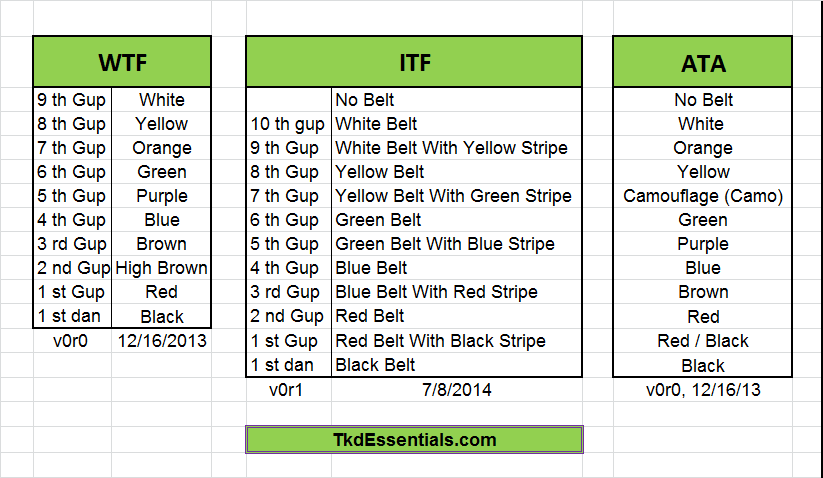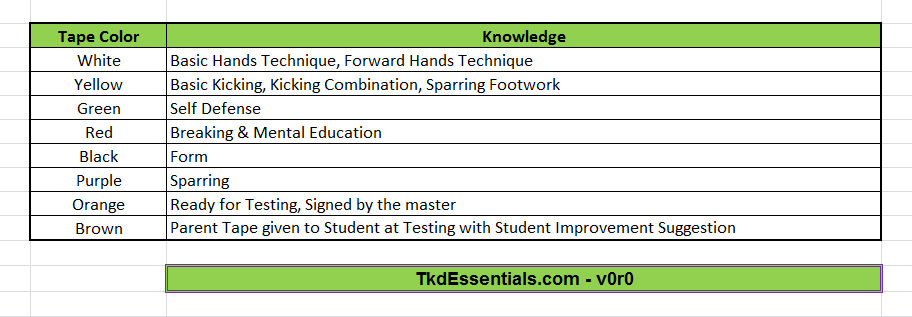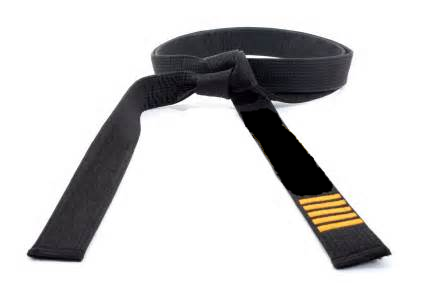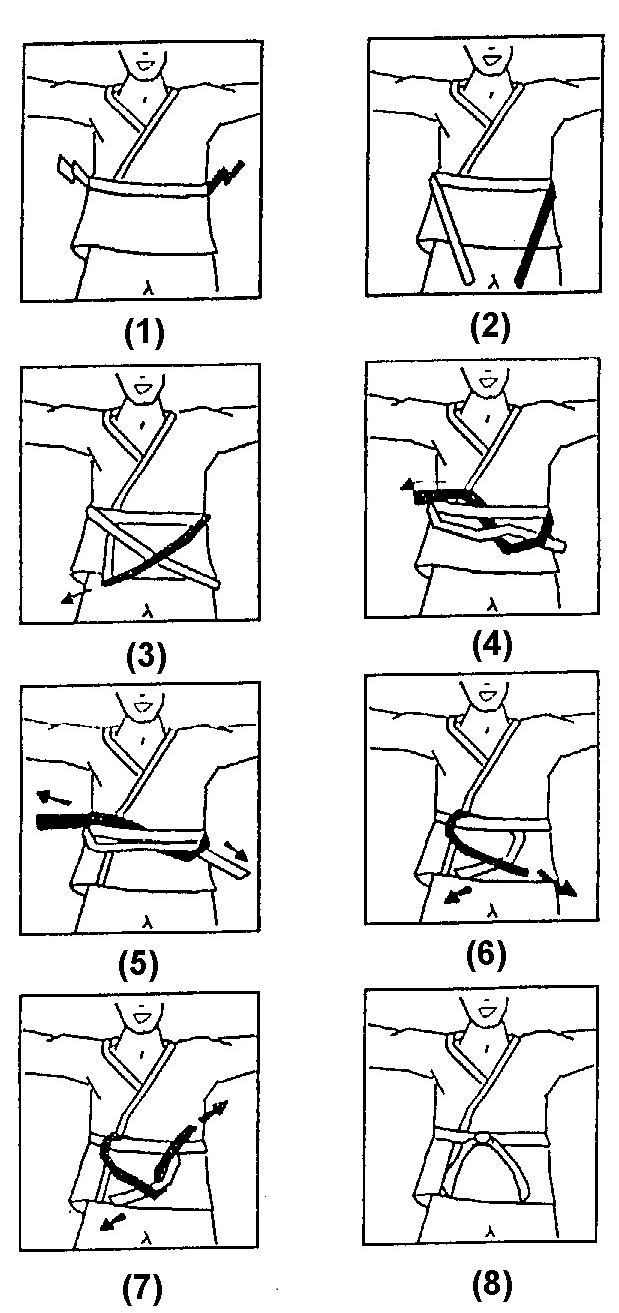by Blake Lakewood, 05/17/2015
 Anyone that has tried to fathom the TaeKwonDo Belts, specifically the colored-belt system has probably ended up in the state of confusion. This is because the colored TaeKwonDo, TKD, Belts are even defined differently between some existing TKD organizations: the World Taekwondo Federation (WTF), the International TaeKwonDo Federation (ITF), and the American TaeKwonDo Association (ATA). Of course each local school has added belts to further monetize their programs. Due to some poor translation from Korean to English, some of the information from official TKD sites is difficult to read. The following table contains the information I was able to find on the different belt structure for each organization:
Anyone that has tried to fathom the TaeKwonDo Belts, specifically the colored-belt system has probably ended up in the state of confusion. This is because the colored TaeKwonDo, TKD, Belts are even defined differently between some existing TKD organizations: the World Taekwondo Federation (WTF), the International TaeKwonDo Federation (ITF), and the American TaeKwonDo Association (ATA). Of course each local school has added belts to further monetize their programs. Due to some poor translation from Korean to English, some of the information from official TKD sites is difficult to read. The following table contains the information I was able to find on the different belt structure for each organization:
 Table 1 – WTF, ITF and ATA Belts
Table 1 – WTF, ITF and ATA Belts
Colored Belts
From a little more research it appears that the belt structures for the pre-black belt, often known as the colored belts, can be defined by the individual schools themselves. To add to the confusion, each school can define their own colors, the order of the colors and the number of tasks that the student must complete to pass to the next color belt. Therefore a Green Belt from one school, within the same organization: WTF, ITF or ATA, may not have learned the same kicks, blocks, sparing footwork, self-defense and forms as the other. But once the student is ready for black belt testing, regardless of what belt they are at that time, they should have accomplished the same tasks required to obtain that black belt. In other words, it does not matter in which order you learn the tasks, but the fact that you have learned them.
The advancement though the different color belts often tells a story or is associated with a philosophical meaning. My daughter’s school uses the growth of a bamboo stalk to symbolism the student’s progression through the color belts. Again, she belongs to a WTF school and the following table describes the “Bamboo Symbolism for Color Belt Progression “:
 Table 2 – Bamboo Symbolism for Color Belt Progression
Table 2 – Bamboo Symbolism for Color Belt Progression
Some WTF schools employ a tape system to allow the master, instructors, staff, office personnel or other students to identify how far through the current color belt a student has progressed. In this example, there are actually 7 tapes the student earns in their classroom training and a single brown tape given to the student by the parent at the day of belt advancement testing. The parent will give their child the tape with a “fault” that the child must promise to attempt to correct. After belt advancement testing is complete, the master may choose not to give the student their new belts immediately. He may indicate a timeframe for the student to complete their brown tape “fault” correction and check with the child’s parents to see if the student has made a conscious effort to correct their fault. The following table is an example of a WTF Tape System:
 Table 3 – An example of a WTF Tape System
Table 3 – An example of a WTF Tape System
Again, this is an example of one WTF tape system from one WTF school. All other WTF schools may not follow these tape colors, may have more or less colors, or may not have a tape system at all!
Sometimes some TKD schools have “special” belts that the color-belted student will be lent on performing an especially outstanding task. They may have had an excellent testing session, performed an extremely difficult TKD move with little or no effort, or came to class exceptionally focused and ready to learn. They may have been voted into any of the following categories: “Student of the Month”, “Best in Test”, “Most Advanced”, “Best Kick”, “Best in Sparring”, etc. The student will often be lent a flashy belt that will signify their category of achievement to wear while in class for a specific time period. This is an honor the student will not take lightly and will jump at the opportunity to wear such a belt.
When black belts are issued in some schools, fancy name engraving of the student may be stitched into the belt along with the school name and some bars running around the belt signifying the degree the black belt represents. The belt may also contain some Korean writing, that may indicate the name of the school and the student, but this is usually depends on the particular school whether this additional stitching will occur. The figure to the left shows a simple 5th degree black belt with no engraving or stitching except for the belt level identification.
belts are issued in some schools, fancy name engraving of the student may be stitched into the belt along with the school name and some bars running around the belt signifying the degree the black belt represents. The belt may also contain some Korean writing, that may indicate the name of the school and the student, but this is usually depends on the particular school whether this additional stitching will occur. The figure to the left shows a simple 5th degree black belt with no engraving or stitching except for the belt level identification.
If you want to find the optimum way for tying your TKD belt, you would be spending a lot of valuable time looking at the many different ways described on how to perform this basic task. But in the end, the school your student attends will ultimately instruct them on how they should like the belt tied. Below is the method that my daughter was taught:

(1) Begin by placing the middle of the belt at the belly button.
(2) Wrap both ends behind your back and around so they face front.
(3) Left over right. The “tipped” end should be the longer end.
(4) Pull “tipped” end under both layers of the belt.
(5) Tighten. “Tipped” end should be longer.
(6) Right over left.
(7) Pull “tipped” end through the hole and tighten.
(8) The knot should form a fortune cookie shape and ends should be the same length. You’re done!